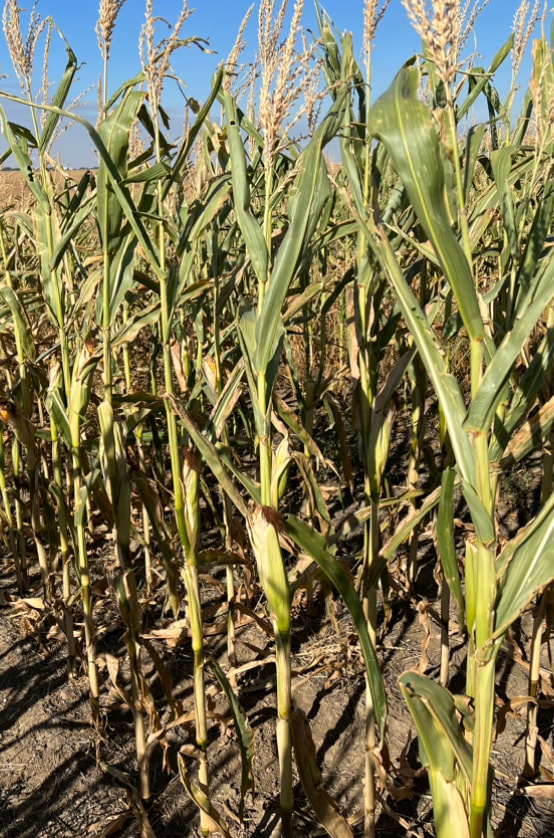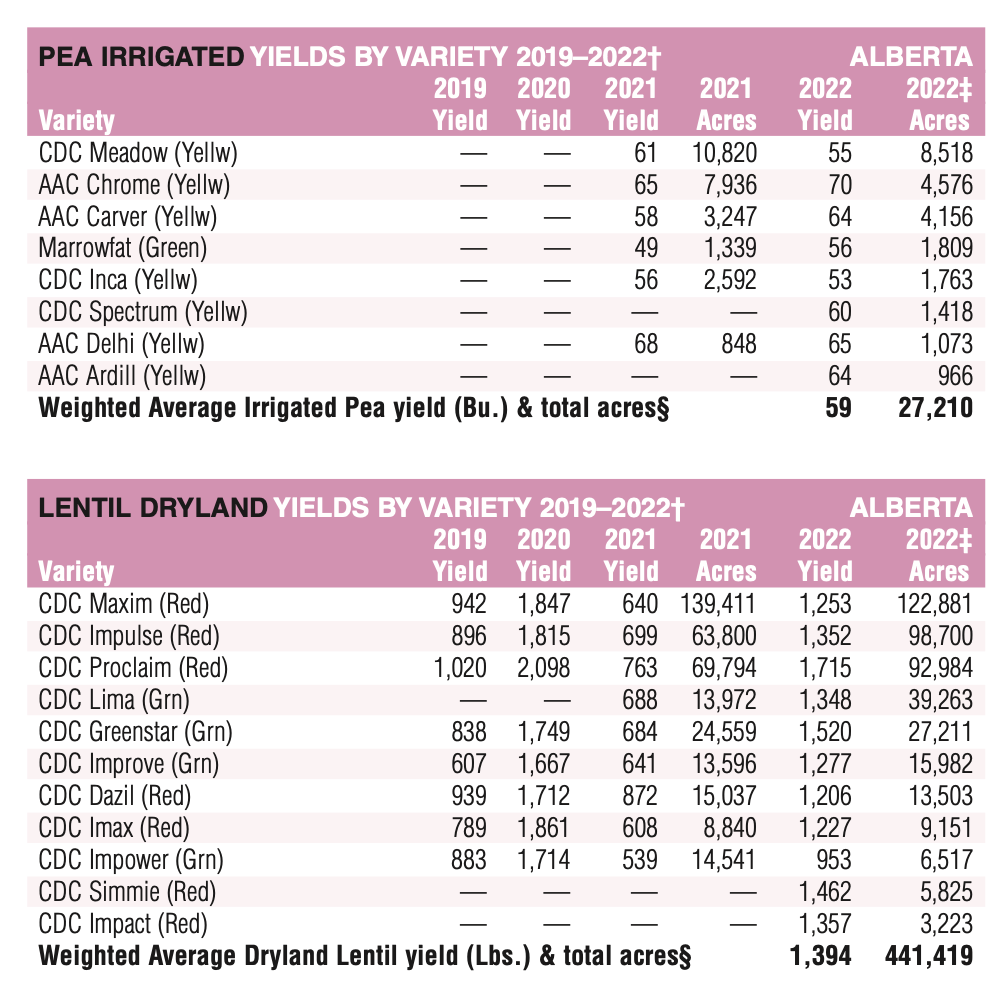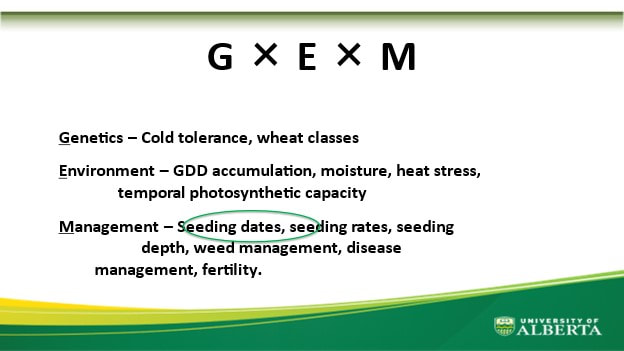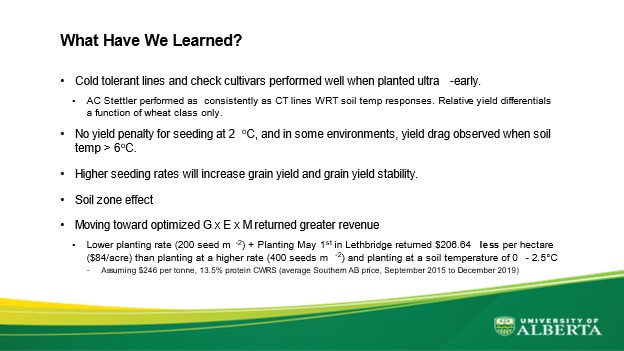- Home
-
Pedigreed Seed
- Hybrid Fall Rye >
- Winter Triticale >
- Winter Wheat >
- Durum Wheat >
-
Spring Wheat
>
- Spring Triticale >
-
Barley
>
-
Feed Barley
>
- 2 Row Feed - Esma
- 2 Row Feed - Sirish
- 2 Row Smooth Awn Feed & Forage - Renegade
- 2 Row Feed - Durango
- 2 Row Feed - Austenson
- 2 Row Feed - AB Hague
- 2 row feed Canmore Barley
- 6 Row Feed - AB Tofield Feed & Forage Barley
- 6 Row Feed - AB Cattlelac Feed & Forage Barley
- 6 Row Feed - AB Advantage Feed & Forage Barley
-
Malt Barley
>
- Malt - Bill Coors 100 Malt Barley
- AB Dram 2 Row Malt & Distilling
- Malt - Fraser Malt Barley
- Malt - Churchill Malt Barley
- Malt - Connect Malt Barley
- Malt - Synergy Malt Barley
- Malt AB BrewNet 2 Row
- Malt - Copeland Malt Barley
- Malt - Metcalfe Malt Barley
- Malt - Bow Malt Barley
- Coming Soon 2 Row Malt & Distilling
-
Feed Barley
>
- Oat >
- Flax >
- Pea >
- Lentil >
- Faba Bean >
- Kabuli Chickpea - Palmer
- Mustard >
- Canola
- Corn
- Cover Crops Links >
- Forages >
- Soybean
- MS Schippers Foaming Wash
- Trials
- Events
- Seed Treating
- Seed Cleaning
- Contact
- About Us
- Jobs
- Blog
|
We hosted a faba bean school where we talked about how to grow faba beans, faba bean markets, and varieties of faba beans. The recording is posted here: https://youtu.be/AEzVVLKNXTw
0 Comments
Pulse Canada hosted a pulse ingredient event called Pulse Immersion Days last week that I had the privilege of attending and also was part of a farmer panel talking about farming. The attendees of this event included pulse buyers and processors, as well as sustainability managers, food company buyers, research and development managers, and product line managers. Just like we do not always know where our crop goes when we deliver it to the elevator, many of these food companies are also disconnected from the farmers. It was very interesting talking with them, learning with them as we toured Winnipeg's Red River College food research labs, and talked about food research Pulse Canada has done Some of the messaging talked about protein fractionation growth, research capacity to help add pulses to products as well as messaging about the sustainability impact and health benefits of pulses. This stems from the Impactful Campaign https://pulsecanada.com/impactful launched by Pulse Canada., Pulse Canada is a Canada wide organization made up of member provincial pulse groups as well as the members from the Canadian Special Crops and Trade Association https://cpsctrade.ca/ and I am on the Pulse Canada Board of directions due to being on the board of Alberta Pulse Growers. Dryland Corn
Dryland corn has been something that people have contemplated or even tried over the years. Success with it is like any other dryland crop, good farming practices and mother nature. A longer season crop like corn can sustain itself though dry periods as it uses moisture over such a longer period of time vs other crops The tools you can utilize to give you the best chance of success are planting rates, planting depth and fertilizer. 1) Planting rates - Typically corn is planted at 32-34000 seeds per acre, with dryland corn in southern Alberta you will want to aim for 16-18000 seeds per acre. The half rate ensures that plants have the right spacing to allocate moisture properly. 2) Planting Depth – 1.5-2 inches would be optimal to create good root strength and the ability to reach available moisture 3) Fertilizer – When laying down fertilizer for corn you want to use a 1:1 ratio, 1 Ibs N for every bushel of expected yield. Optimal years for dryland corn you could see 120 bushel crops, 80-90 bushel ranges can be achieved consistently. https://www.stampseeds.com/corn.html Grazing Corn Grazing corn can be a great winter grazing option that can really pack on the pounds! When grazing corn you want to stick to later day maturing corn so that kernels stay softer to keep the palatability up. Thunderseed has developed high digestible varieties that can reach physiological maturity and be fully digestible to the cow. The stalks themselves are more digestible as well since the ear is lower which pushes the heavily lignified portion of the plant down. https://www.stampseeds.com/corn.html If you are interested in either of these on your farm, chat with Blair Balog and he will get you situated with a variety that will work best for you at 403-634-4349 (calls & text) Office: 403-739-2233 Email: [email protected] Yield 2023 AFSC publishes the yield 2023 magazine yearly showing insured acres and yields by zone in the province. I do enjoy looking at yield and variety trends in it and comparing varieties. One thing to be careful of when looking at the yields in it is that some areas have a variety that is popular but if that area gets more rain than average or less then it can make the variety look much better or worse vs others for the zone or provincial averages. If not enough acres of a variety are grown/insured they will not list it as well. PDF posted here: https://www.stampseeds.com/blog/afsc-yield-2023 One interesting note I always see is how good CDC Proclaim CL red lentil is (and how few grow them) & how well AAC Chrome do on irrigation (and also on dryland when average moisture) Keep in mind there can be some location trends but it can be an indication of performance.
We had the opportunity to have Dr. Brian Beres speak about ultra early seeding on the last day of AG Expo. His results showed that there is a lot of potential to gain yield if you seed based on soil temperature and not the calendar. Below are a few of his thoughts towards what you should be doing and looking for to have success. If you are thinking about ultra early seeding, best place to start is in the fall the year before with a residual herbicide. The soil temperature you should check at is 1-2 inches depth at 10 am. If soil is and is 0-2 degrees Celsius, even if it is in February they have had good results. If you have reached that temperature at that time and the soil is fit you can seed regardless if it looks like it may get a little colder in future days. Disk or shank drills did not seem to make a difference in their research. Fertilizer was put on as normal in the same pass and usually was a 50/50 blend of ESN and 46-0-0. Throughout his studies he found that having a planting rate of 40 seeds per square foot gives you the best yield advantage overall. Fungicide and insecticide seed treatments are important for the abiotic stress of the cold. Below is Dr. Brian Beres Ultra Early Seeding Presentation in PDF format:
|
AuthorsBlair Balog - Seed Specialist at Stamp Seeds Archives
July 2024
Categories |
||||||||||||
Seed TreatingWe offer a full range of seed treating and inoculant application options:
BASF Seed Treatment Bayer SeedGrowth Syngenta Seed Care |
Contact UsSubscribe to our mailing list!
We send emails about seed varieties, events, and crop production tips. |
Location
- Home
-
Pedigreed Seed
- Hybrid Fall Rye >
- Winter Triticale >
- Winter Wheat >
- Durum Wheat >
-
Spring Wheat
>
- Spring Triticale >
-
Barley
>
-
Feed Barley
>
- 2 Row Feed - Esma
- 2 Row Feed - Sirish
- 2 Row Smooth Awn Feed & Forage - Renegade
- 2 Row Feed - Durango
- 2 Row Feed - Austenson
- 2 Row Feed - AB Hague
- 2 row feed Canmore Barley
- 6 Row Feed - AB Tofield Feed & Forage Barley
- 6 Row Feed - AB Cattlelac Feed & Forage Barley
- 6 Row Feed - AB Advantage Feed & Forage Barley
-
Malt Barley
>
- Malt - Bill Coors 100 Malt Barley
- AB Dram 2 Row Malt & Distilling
- Malt - Fraser Malt Barley
- Malt - Churchill Malt Barley
- Malt - Connect Malt Barley
- Malt - Synergy Malt Barley
- Malt AB BrewNet 2 Row
- Malt - Copeland Malt Barley
- Malt - Metcalfe Malt Barley
- Malt - Bow Malt Barley
- Coming Soon 2 Row Malt & Distilling
-
Feed Barley
>
- Oat >
- Flax >
- Pea >
- Lentil >
- Faba Bean >
- Kabuli Chickpea - Palmer
- Mustard >
- Canola
- Corn
- Cover Crops Links >
- Forages >
- Soybean
- MS Schippers Foaming Wash
- Trials
- Events
- Seed Treating
- Seed Cleaning
- Contact
- About Us
- Jobs
- Blog





 RSS Feed
RSS Feed